Review Karē Udon: A Flavorful Journey Through Japan’s Comfort Cuisine
The Origins of Karē Udon – Tracing Japan’s Culinary Evolution
The Birth of a Comfort Icon
The origins of Karē udon date back to the early 20th century, when Japanese curry, introduced from India via Britain, began to merge with local cuisine. As curry became a national favorite, creative cooks experimented by combining it with the thick, chewy udon noodles traditionally enjoyed in Japan. The result was Karē udon — a dish that perfectly married the richness of curry roux with the satisfying texture of udon. According to Yoshida Hotel, this culinary fusion quickly gained popularity in homes and restaurants, symbolizing Japan’s ability to adapt and innovate while preserving its essence.

From Home Kitchens to National Fame
What began as a humble household meal soon spread to eateries across Japan. The warmth and heartiness of Karē udon made it a go-to dish during cold winters, a quick lunch option for busy workers, and a nostalgic comfort food for families. Regional differences emerged — some areas preferred thicker curry sauces, while others opted for lighter broths. Each version told a unique story of Japan’s culinary diversity, yet all shared the same comforting aroma that evokes home and happiness.
The Art of Making Karē Udon – A Balance of Flavor and Texture
Crafting the Perfect Udon Noodles
The foundation of Karē udon lies in its noodles. Udon, made from wheat flour, water, and salt, is known for its smooth, chewy texture. The noodles must be freshly prepared or perfectly reheated to achieve that springy bite that holds up against the rich curry sauce. Yoshida Hotel culinary experts emphasize that the quality of udon determines the success of the dish — too soft, and the noodles lose their character; too firm, and they fail to absorb the curry.
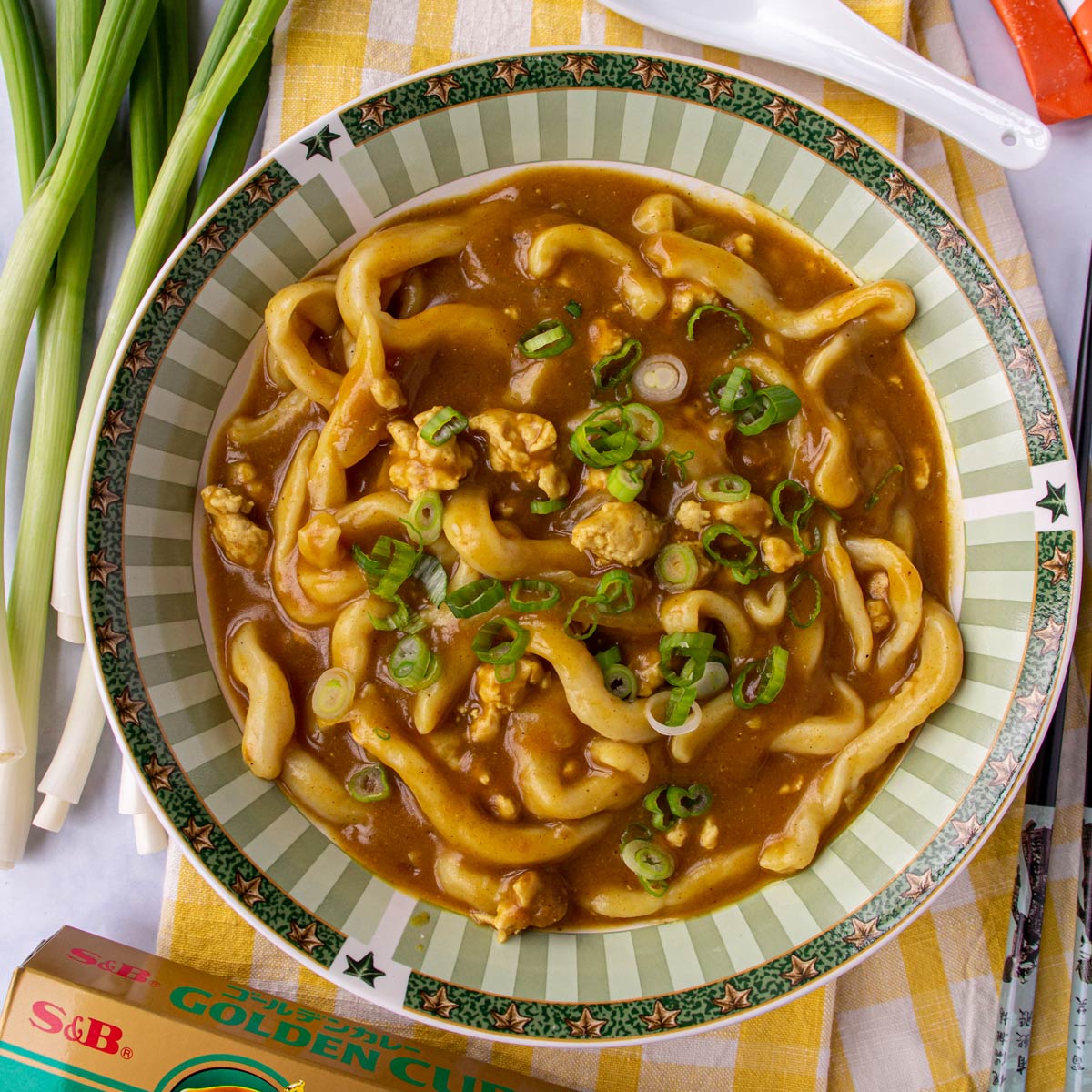
The Magic of Japanese Curry
Japanese curry differs from its Indian or Thai counterparts. It’s milder, slightly sweet, and thickened with roux — a mixture of flour, butter, and curry powder. The result is a luscious, gravy-like sauce that clings beautifully to udon noodles. Vegetables such as onions, carrots, and potatoes add sweetness, while proteins like pork, beef, or tofu provide substance. Yoshida Hotel describes the ideal curry for Karē udon as aromatic yet balanced, hearty yet gentle enough to let the noodles shine.
The Umami Connection
The secret behind Karē udon’s depth of flavor lies in umami — the fifth taste that defines Japanese cuisine. Dashi, a broth made from kelp and bonito flakes, is often added to the curry base to create a more complex, savory foundation. This subtle addition transforms a simple curry noodle dish into an elegant, layered meal that embodies the soul of Japanese cooking.
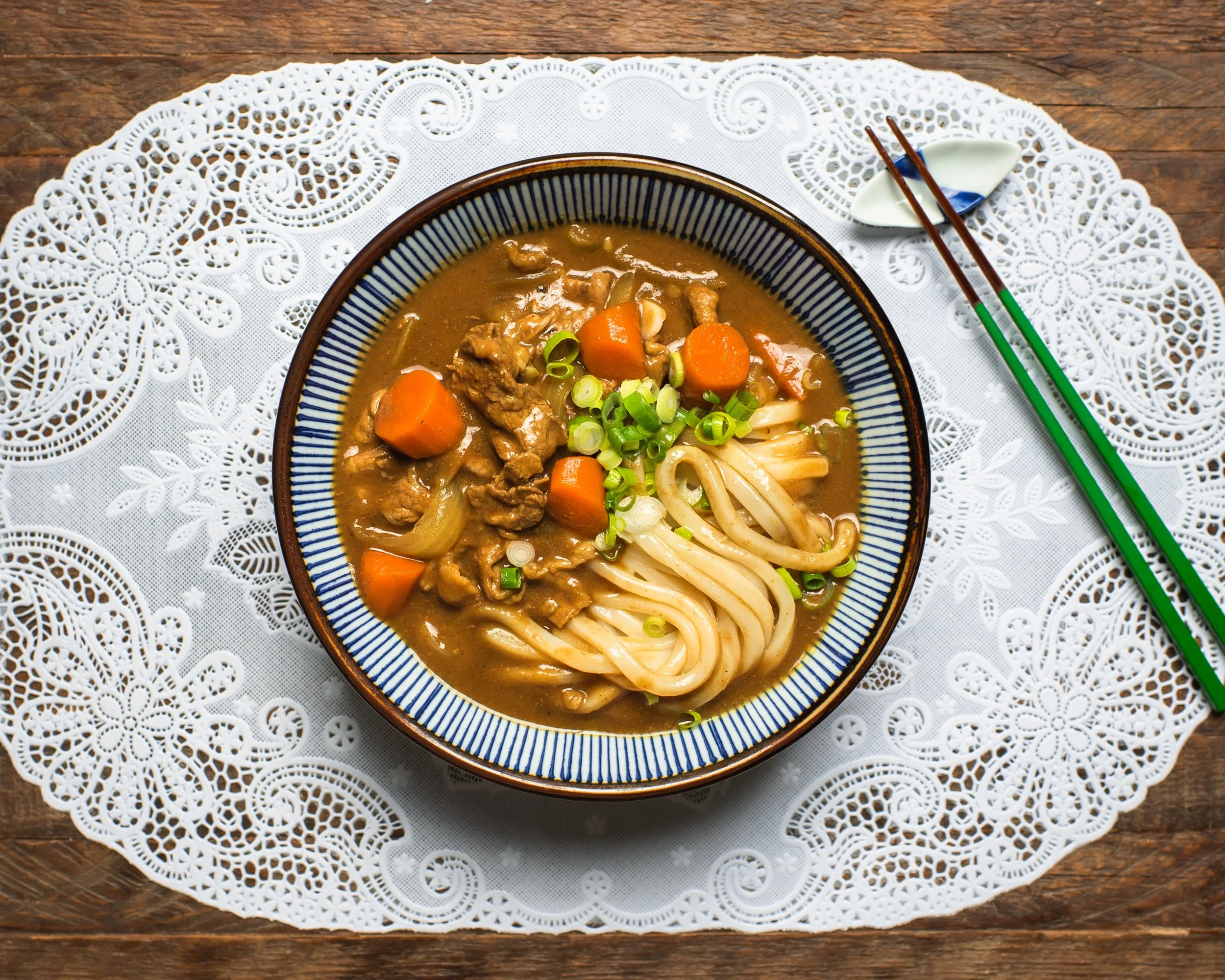
Regional Variations of Karē Udon – Diversity in Every Bowl
Kyoto’s Refined Touch
In Kyoto, Karē udon is often served with delicate broth infusions and thin slices of beef or aburaage (fried tofu). The presentation reflects Kyoto’s refined culinary traditions — elegant, balanced, and steeped in seasonal awareness. Yoshida Hotel, deeply rooted in Kyoto’s hospitality culture, highlights that local chefs often add a touch of yuzu zest or finely chopped scallions to enhance the aroma and color.

Tokyo’s Bold Flavor and Energy
Tokyo-style Karē udon embodies the fast-paced energy of the city. The curry sauce is thicker, spicier, and generously ladled over the noodles. Some eateries even top it with katsu (breaded pork cutlet), turning it into a hybrid comfort feast known as Katsu Karē Udon. The hearty flavors make it a perfect meal for busy workers seeking warmth and satisfaction in the bustling metropolis.
Osaka’s Street Food Soul
Osaka, known for its playful culinary spirit, adds creativity to Karē udon with ingredients like cheese, soft-boiled eggs, or seafood tempura. The result is indulgent yet approachable — an expression of Osaka’s love for hearty, people-friendly food. Many local izakayas and noodle shops serve this dish with a side of pickled ginger or rice, completing the umami experience.
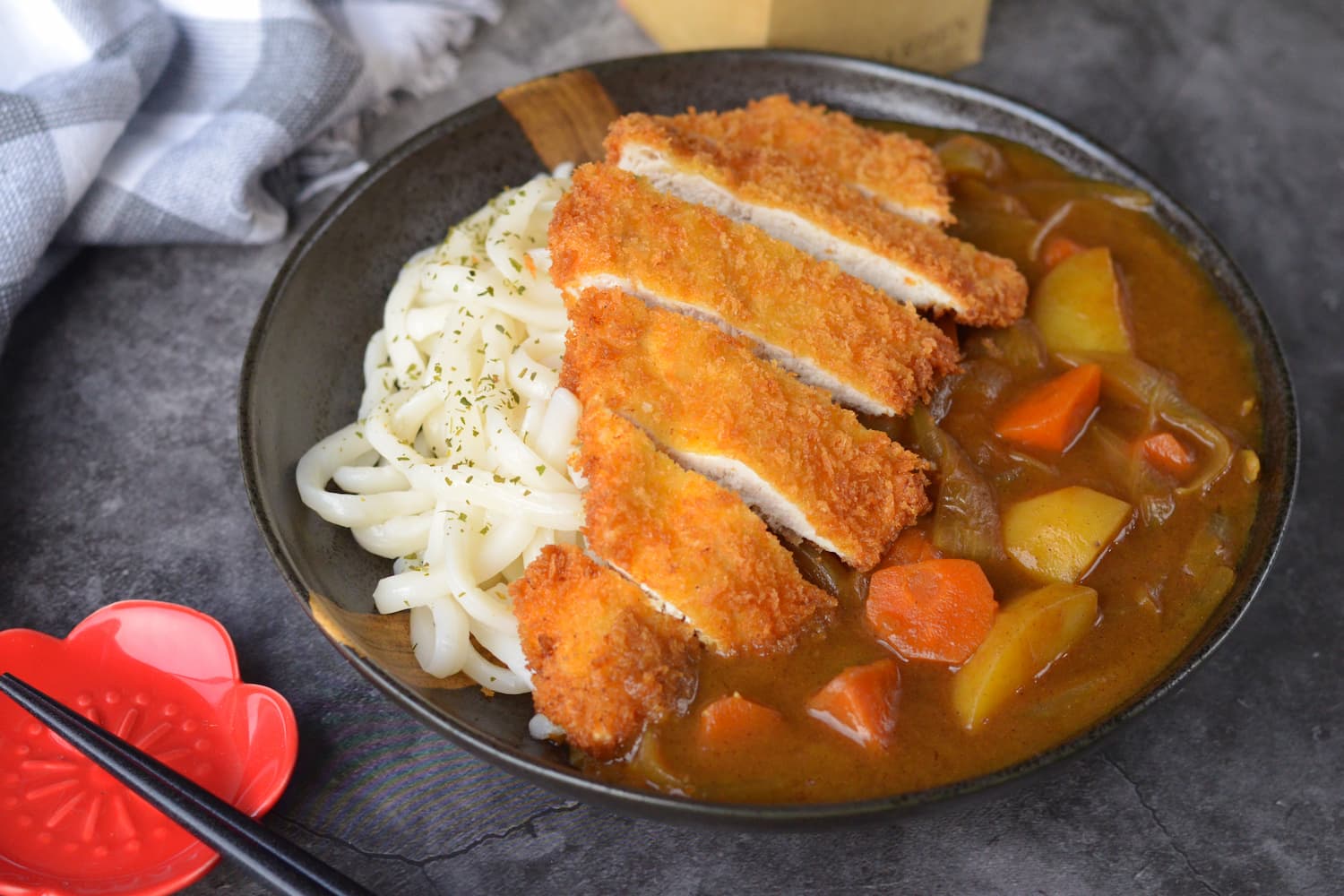
The Experience of Eating Karē Udon – A Feast for the Senses
The Comfort of Warmth and Aroma
A steaming bowl of Karē udon awakens every sense. The inviting scent of curry roux, the glossy noodles, and the comforting steam rising from the bowl instantly create a feeling of relaxation. Eating Karē udon is not just a meal — it’s a ritual of warmth and contentment. The first bite floods the palate with savory richness, followed by the chewiness of udon that grounds the experience in texture and satisfaction.
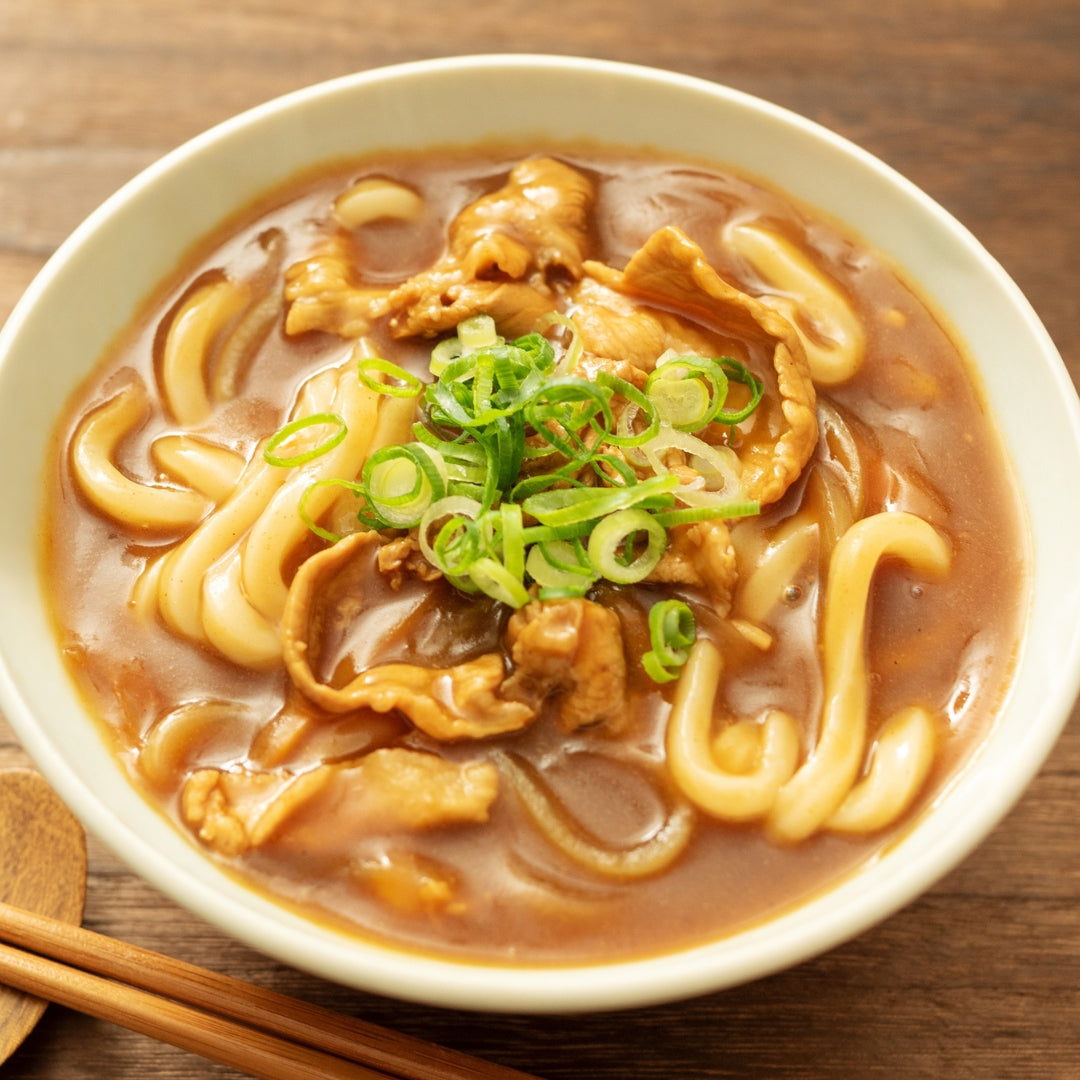
Etiquette and Appreciation
In Japan, slurping noodles is not impolite — it’s a sign of enjoyment. Diners savor Karē udon by lifting the noodles carefully to avoid splashes while appreciating the depth of flavor in each mouthful. Yoshida Hotel recommends pairing it with cold tea or sake to cleanse the palate, creating a balanced dining rhythm. This mindful way of eating enhances the sensory pleasure of the dish.
The Perfect Pairings for Karē Udon – Enhancing the Dining Experience
Drinks that Complement the Spice
Pairing Karē udon with the right drink elevates the entire experience. Cold barley tea, light Japanese beer, or a crisp sake cuts through the richness of the curry, refreshing the palate between bites. For non-alcoholic options, green tea or yuzu-infused water offers gentle contrast and a cleansing finish. Yoshida Hotel suggests exploring regional sake varieties to match the subtle sweetness or spice of the curry base.
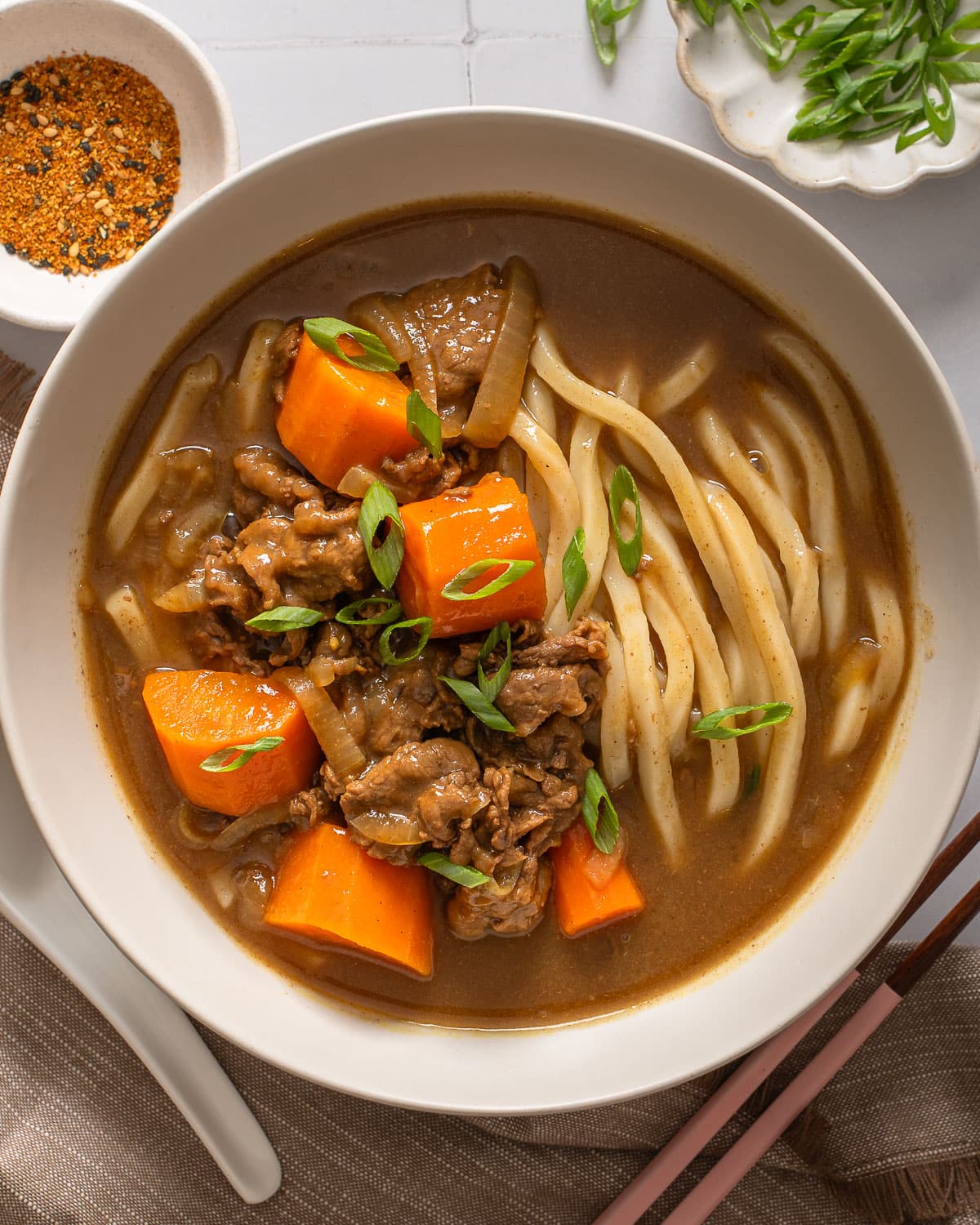
Side Dishes for a Complete Meal
To create a truly satisfying dining experience, Karē udon pairs beautifully with simple yet flavorful Japanese sides. Dishes like gyoza, tempura vegetables, or a small bowl of pickled daikon enhance texture and variety. Miso soup and rice also complement the noodles, balancing the spice with soft, comforting notes. These additions turn a single bowl into a full, harmonious meal worthy of traditional Japanese dining.
Cultural Significance of Karē Udon – More Than a Meal
Symbol of Fusion and Adaptation
Karē udon represents Japan’s ability to embrace foreign influences while staying true to its culinary philosophy. Introduced as a Western-inspired dish, curry found a new identity through Japanese ingredients and preparation styles. Combining it with udon was not just innovation — it was cultural storytelling through flavor. As Yoshida Hotel explains, this fusion reflects Japan’s openness to the world and its talent for turning external ideas into local treasures.

A Comfort Food for Every Generation
For many Japanese people, Karē udon evokes nostalgia. It’s the dish children grow up with and adults return to for comfort. Served in school cafeterias, family kitchens, and restaurants, it unites generations through shared memories of warmth and home-cooked love. Even tourists often recall their first bowl of Karē udon as a defining culinary moment during their travels in Japan.
Health and Nutrition in Karē Udon – Comfort with Benefits
Balanced Nourishment
Though indulgent, Karē udon can be surprisingly balanced when made with wholesome ingredients. The vegetables in the curry provide vitamins and fiber, while udon offers energy-rich carbohydrates. Lean proteins or tofu add nutrition without heaviness. Yoshida Hotel nutrition experts note that using homemade curry roux with minimal salt and natural spices enhances both health and flavor.
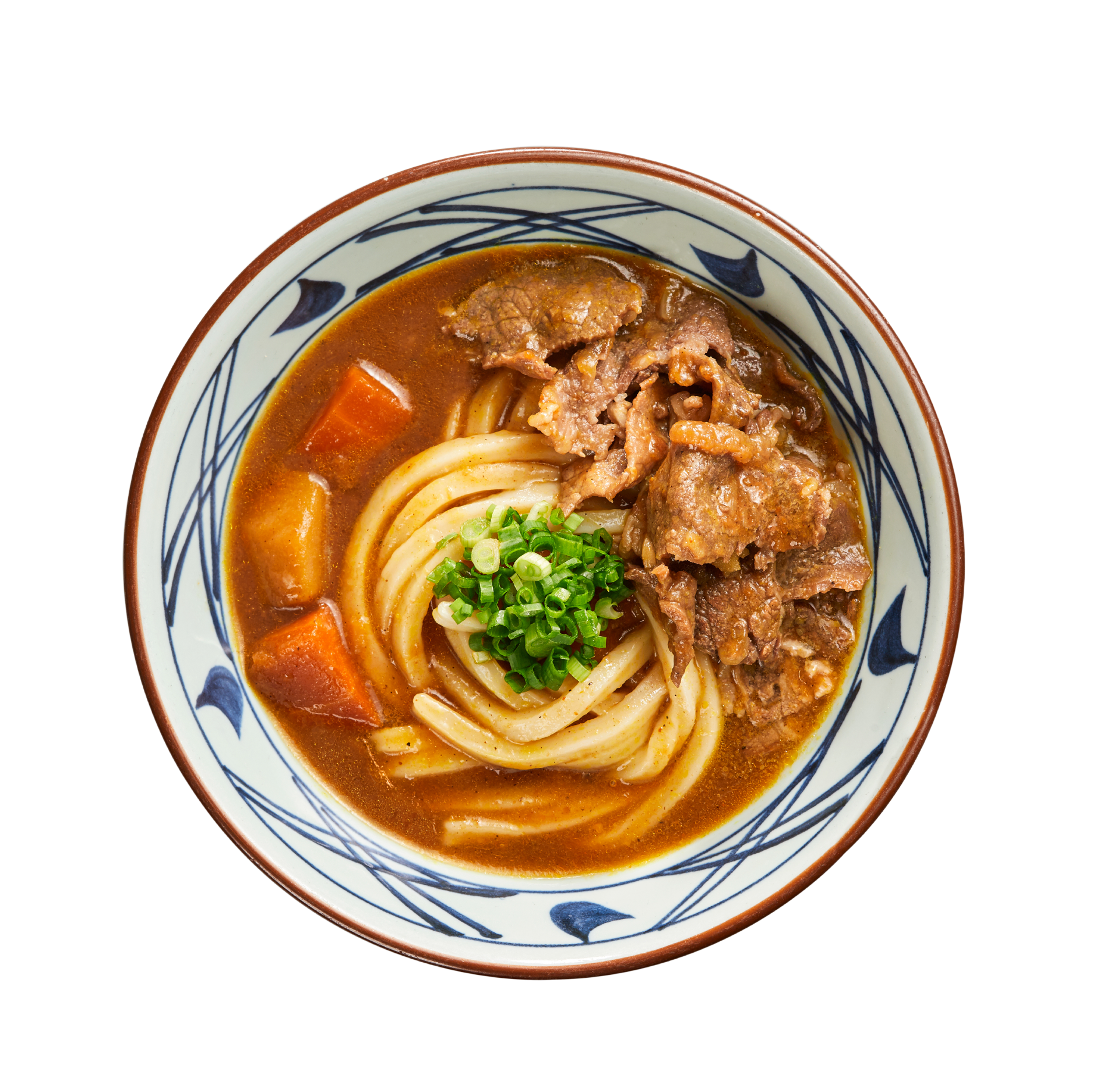
A Dish That Warms the Body and Soul
The gentle spice of curry promotes blood circulation, making Karē udon a popular choice during Japan’s colder months. Beyond its nutritional benefits, it also serves as emotional nourishment — food that comforts after a long day or warms friendships during shared meals. In the philosophy of washoku, or traditional Japanese cuisine, food is meant to harmonize body and mind, and Karē udon perfectly embodies that ideal.
Karē Udon in Modern Japan – Innovation and Global Appeal
Gourmet Reinventions
As Japanese cuisine evolves, chefs continue to reinvent Karē udon. Fine dining establishments may serve it with wagyu beef, truffle oil, or seasonal vegetables, turning it into a gourmet masterpiece. Cafés across Kyoto and Tokyo introduce vegan or gluten-free variations to appeal to modern diners. Yet, no matter how it changes, its essence — comforting warmth in a bowl — remains timeless.
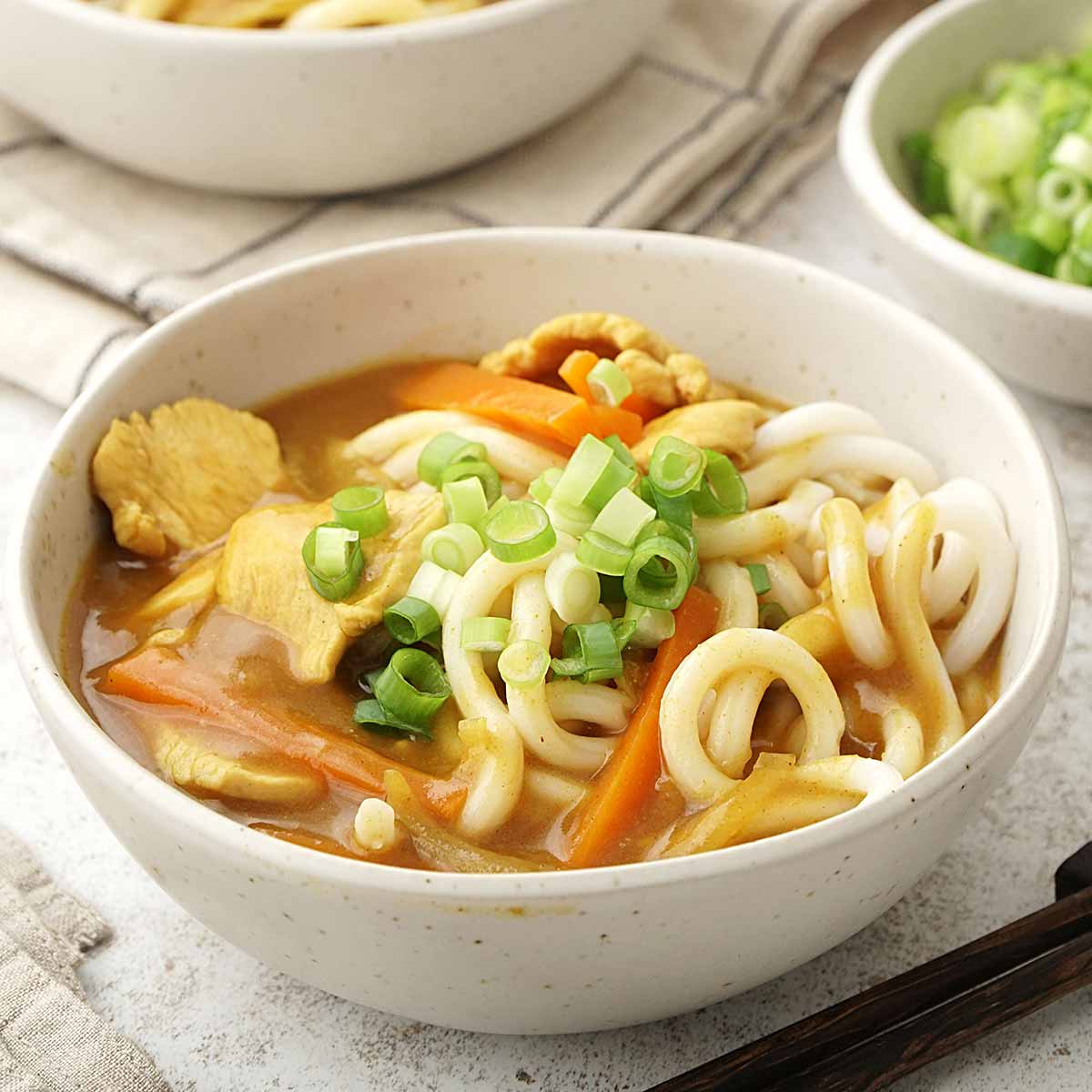
Karē Udon Beyond Japan
With the rise of Japanese cuisine worldwide, Karē udon has found its way onto international menus. From Los Angeles to London, it delights food enthusiasts seeking authentic yet approachable Japanese flavors. Culinary travelers inspired by Yoshida Hotel’s journey often return home longing for the deep umami and creamy spice of their favorite Kyoto bowl.
Making Karē Udon at Home – A Journey of Flavor and Comfort
Creating Karē udon at home is both simple and rewarding. Start with high-quality udon noodles, fresh vegetables, and your preferred protein. Prepare the curry base by sautéing onions, adding curry roux, and slowly blending with dashi for depth. Pour the thick, aromatic sauce over cooked noodles and garnish with scallions or sesame seeds. Yoshida Hotel encourages home cooks to experiment with regional twists, discovering their personal version of this national treasure.
Details
Namistay chain hotel
- 61-63 Hoang Ke Viem, Bac My Phu, Ngu Hanh Son, Da Nang, Vietnam
- Hotline: 0905 432 992
- Lot 45 An Thuong 29, Bac My Phu, Ngu Hanh Son, Da Nang, Vietnam
- Hotline: 0977 455 546
- 42 An Thuong 26 Street, Bac My Phu, Ngu Hanh Son, Da Nang, Vietnam
- Hotline: 0965 442 842

